Saturn V Mobile Launch Tower – swing arms
I got back to work on the LUT yesterday, intending to complete some piping, continue work on the launch pad support stands, and start figuring out how to model the swing arms.
The first two were straightforward, but the third involved what I enjoy the most about this project - researching the different components of the LUT and figuring out how to model them in sheet, strip & rod plastic.
The swing arms and their mounting system appear to have been designed by the engineers in Huntsville who were building the Saturn V. So it appears that the launcher was built, then the massive bracket to which the swing arms were attached was attached (as well as the two vertical posts to the left, which I haven't found a term for yet, but they're part of the arm system) , and the swing arms were mounted to that. This photo shows the bracket, and the photo to the right shows the as-yet unpainted bracket being test fitted to the model several months ago. The arms themselves were like the rest of the LUT - there was a basic design which was duplicated for most of the arms, and the necessary piping and machinery was added to that basic structure. But at its most basic, the support arms were made up of the bracket, hinge arms, and three elements. I was fortunate to find scale drawings of the various parts, so I could duplicate the construction, more or less. (My support members are approximately three times the thickness of the real thing, but I need to keep the component parts a manageable size - any smaller and they're not only too small to work with, but they don't have sufficient structural strength).
As this drawing shows, the arm started with a mounting hinge, which has an upper and a lower portion. I made eighteen of those yesterday, cutting them out of two pieces of sheet plastic and attaching a short pivot rod to each. I attached the first seven bottom hinges to the tower, checking the fit against the Saturn V as I went. I discovered several months ago that the tower elements are very slightly too tall. - approximately 1/64" per level. Although the difference is miniscule on each level, it means that by the time we get to the swing arms for the upper levels, they have to be manually sited to make sure the arms match the rocket, despite where they're supposed to be on the tower.
Most of the arm is made up of the standard "first section", which is then bolted onto the "second element" which is a similarly standard ending section to which all the machinery and fittings unique to that specific arm were fitted. Beginning with the sixth arm, the Saturn V was narrowing, so a custom "extension element" was inserted between the first and second elements. From a modeling perspective, what this meant was that there would be a doubling up of vertical elements, which was easy to do - I just cut an additional piece for each side.
I drew up the plans to scale and built a base, two side pieces, and the connecting rods for the top. I then attached the whole thing and test-fitted it to the LUT. Unfortunately, it didn't fit! I discovered early in construction that my scaling for the base was slightly off, but what I didn't know till now was that it was enough to decrease the spacing of the rocket from the tower by perhaps 3/16". So the arms will need to be correspondingly trimmed down. As the final photo shows, the first seven (of an eventual nine) bottom hinges are in place, and the first arm is test-fitted. It'll have to be modified to get the distance to the rocket correct, and I'm still working on a hinge mechanism that will let me remove the arms.
Update: I diagnosed the size problem and discovered it's not a problem with the base scaling at all. I missed that the first swing arm is mounted slightly closer to the vehicle (13" closer) and I made the arm to the standard 420" length. If I move the arm to the next higher position it fits comfortably - meaning the base is accurate after all.
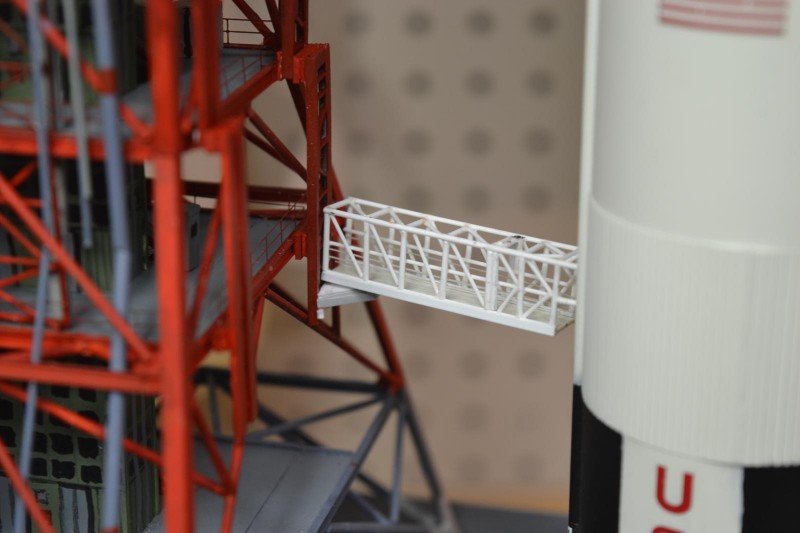
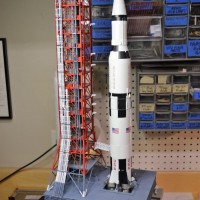

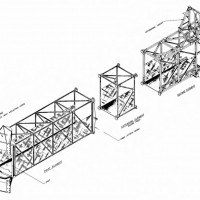
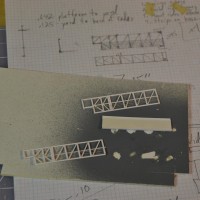


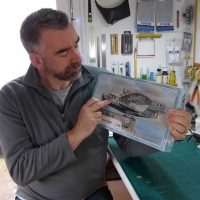
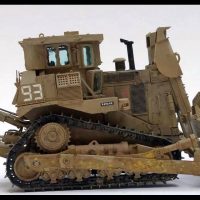
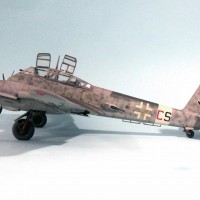
Very impressive work, sir...a real beauty.
Looking good!
🙂 … Greetings … 🙂 :
Very interesting work Michael, well planned out.
Quite a project, Michael! You've done a beautiful job so far.